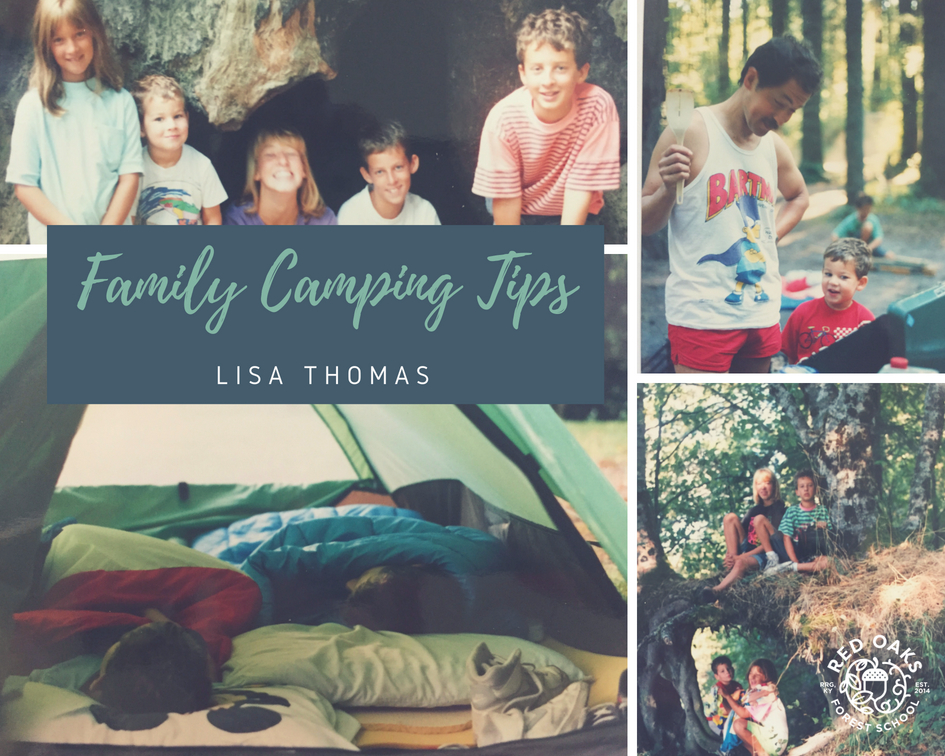My mom set the tone for most of my childhood: comfortable and suburban, with warm hugs and homemade bread. But every now and then, Dad swept us along on some grand and unpredictable adventure. More than once, it was a cross-country camping trip. Safely ensconced in the drivers’ seat of our Ford Clubwagon, Dad wore a bike helmet all the way from Maryland to California, for the sheer joy of embarrassing his five children. Humility wasn’t the only lesson that we learned on these adventures with Dad, though. We also learned, for example, that if you want to scatter M&M’s on the floor of your tent before going to sleep, you had better zip the tent shut . . . well, unless you like waking up to a swarm of bees. And it was while backpacking alone with Dad that I learned that sometimes, directly after someone says “trust me, I’m a scout master,” they will drop their lighter into their illegal campfire (you know, the one they started—against your advice—in an ocean of dry leaves). And if that does happen to you, you may as well know that you will have to use all of your carefully rationed water and an uncomfortable amount of your shoe rubber to put out the resulting flames.
Now that I’m a parent, it’s my turn to carry the torch and light up my kids’ lives with grand and unpredictable adventures. I’d prefer not to ignite the entire forest in the process, though, and if we can avoid an unreasonable numbers of bee stings, so much the better! The fact is that camping will always be unpredictable, but with the right preparation, it is fun, safe, and oh so worth it.
Many in the Red Oaks community are far more seasoned campers than I am. To all those expert campers out there, please share your own advice and stories below! For those of you who are new to camping or new to camping with children, here are a few tips to help you get started.
- Practice. Make sure you know how to use all that fancy new gear you just got! Set up your tent in the backyard (you might even consider letting the kids sleep in it for a night). Test any battery- operated devices that you may be planning to bring (headlamps, lanterns, air pumps, portable fans, etc.) If you plan to cook on a camp stove, cook a practice meal on your patio. Burnt food stuck to a camping pot is much easier to deal with when you have a sink.
- Pack everything. Admittedly, you won’t use everything, but since the outcome of your adventure depends on two things that are completely beyond human control (weather and your own children), come ready for anything. It might rain, it might be bitterly cold, it might be gloriously sunny, there may be scraped knees, there may be the most perfect stream for splashing in, there may be mud for making pies. Sometimes something as simple as a bucket and shovel or a warm towel to dry off with can make the day better for everyone. For concrete suggestions about what to pack, download the packing list below.
- Organize. Whether you opt for bins, bags, or plastic drawers, give some thought to how you pack your gear. Keeping all cooking items—utensils, seasoning, fuel for your stove, etc.—together in one place will save you time and stress. Keep in mind that some items will require locating after dark, and organize accordingly. Stash an extra flashlight or two in your glove compartment for easy access.
- Enlist your kids’ help! Lighten your own load and empower your kids by including them in camping tasks. If your children are old enough, delegate tasks and sit down with a cold iced tea. My older boys (7 and 9) are usually excited to help set up a tent, and even very young children can carry sleeping bags and pillows into the tent and help get the beds ready. Whenever possible, get all of your setup done before dark. This means putting up your tent and rain fly (be sure to choose a safe spot by checking for dead trees or branches in the vicinity), then spreading out sleeping bags and locating pajamas, stuffed animals, or other bedtime items. It also means setting up your food prep and eating area. If you plan to cook, unpack your stove, pots and pans, utensils, etc. Set up camp chairs, hammocks, and anything else you plan to use. If you prefer to keep your kids out of the way while you do this, send them to hunt for kindling or marshmallow roasting sticks!
- Identify hazards and establish rules. Is there water nearby? Where will the campfire(s) be located? Is there a sprawling patch of poison ivy on one side of the camp? Is there a road? Are there bears in the area (if you are in Kentucky, the answer is probably yes)? How far can you see in each direction? The rules and boundaries that you establish will depend on the age, experience, and disposition of your kids. To avoid unwanted bear encounters, keep food and scented items out of your tent, and be sure to pack them away securely for the night. A good basic rule for campfire safety is that if children put a stick part way into the fire, it has to go in all the way and cannot be withdrawn (because small children brandishing smoldering sticks is terrifying). Keep a close watch on your kids when they are near the fire, especially if they are new to camping. Tip: Deck your kids out with glow sticks and bracelets to make them easier to keep track of after dark.
- Loosen the reins. Yes, you want your kids to be safe, and yes, you want them to eat the organic kale quinoa salad (or hot dog) you so lovingly prepared, and yes, you want everyone to be happy all the time, but clinging to that desire isn’t going to increase the fun factor for anyone, least of all you. While setting clear limits to keep your brood safe, figure out what you can let go of to make the time more manageable and enjoyable for yourself. Perhaps you can live with dirtier than usual attire and a muddy foot print or two inside of your tent? With Pop Tarts for breakfast? With the possibility of bug bites or poison ivy?
- Bring your sense of humor. Because something will happen that will force you to choose between laughing and swearing. A cluster of adults shining their headlamps on your kindergartner’s bare butt while you tweeze cactus spines from it is funny if you let it be. (Even your kindergartner will find it funny by the time he reaches first grade.) Also, lucky you, there aren’t too many prickly pear cacti in Kentucky.
- Ask the experts! The guidelines above should help you get started, but I’m just one person with one set of experiences. If you talk to other camping parents, they will have other suggestions. So ask your camping friends for their tips and advice. Or better yet, ask your questions in the comments section below and draw on the expertise of the entire Red Oaks’ community! And for all you camping pros out there, please comment below with your own tips and advice!
ABOUT THE AUTHOR
Lisa Thomas is the nature-lovin' mama of three nature-lovin' boys. In her free time, you'll most likely find her reading, writing, running (it's more of a waddle, really), or rock climbing.


